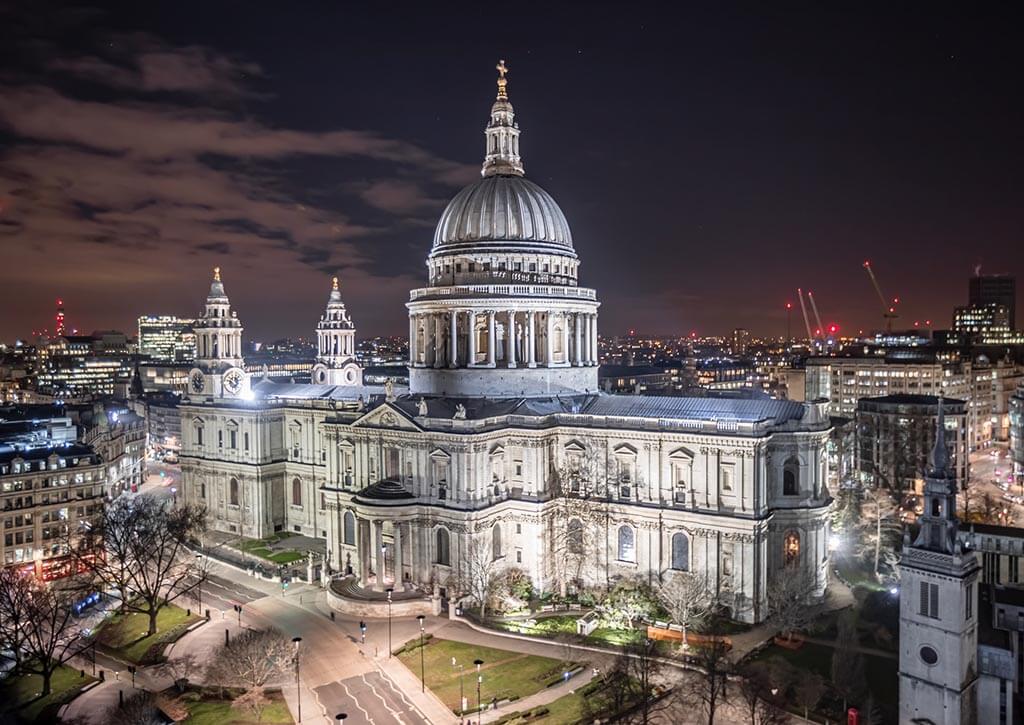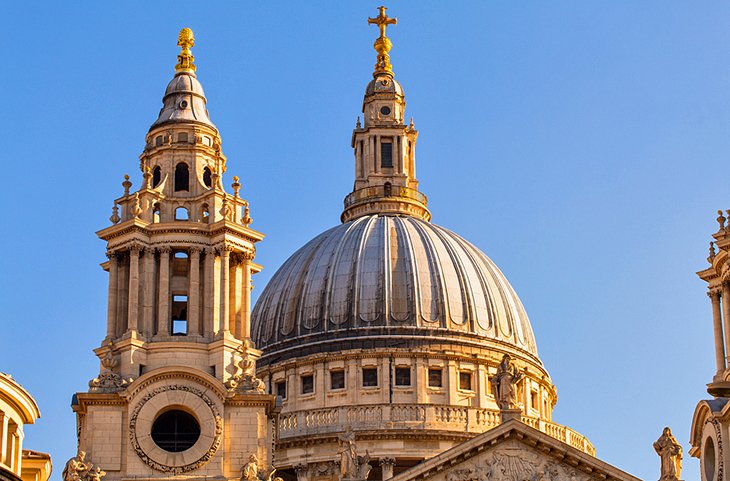St. Paul’s Cathedral
London, United Kingdom

Visit St. Paul’s Cathedral in London, United Kingdom—a world-famous landmark and one of the most iconic historical sites in the UK. Discover its rich history, stunning Baroque architecture, and unique attractions like the Whispering Gallery. Ideal for tourists seeking things to see in London or exploring St. Paul’s Cathedral tourism, this must-see site offers breathtaking views, cultural depth, and spiritual significance.
One of the most iconic landmarks in the United Kingdom, St. Paul’s Cathedral in London is a must-visit for anyone interested in history, architecture, and British culture. This magnificent structure dominates the London skyline with its grand dome, and it continues to be one of the most important historical sites in the country. Whether you're looking for things to see in London or planning your St. Paul’s Cathedral tourism, this awe-inspiring cathedral should be at the top of your list. A Brief History of St. Paul’s Cathedral The current St. Paul’s Cathedral was completed in 1710 and was designed by the renowned architect Sir Christopher Wren after the previous structure was destroyed in the Great Fire of London in 1666. However, its history stretches back over 1,400 years, with several earlier churches standing on the same site since AD 604. The cathedral has been the venue for some of the most significant events in British history, including the funeral of Sir Winston Churchill and the wedding of Prince Charles and Lady Diana Spencer. Its historical and cultural significance makes it one of the most cherished landmarks in the United Kingdom. Top Features and Highlights When you visit St. Paul’s Cathedral, you’ll be amazed by its Baroque architecture, intricate mosaics, and awe-inspiring dome—one of the largest in the world at 111 meters high. Don’t miss the Whispering Gallery, famous for its unique acoustics, where a whisper can be heard clearly from across the circular wall. Climb up further to the Stone Gallery and the Golden Gallery for sweeping panoramic views of London’s skyline. Inside, marvel at the ornate high altar, the crypt where national heroes are buried, and the breathtaking interior design, which combines artistry with spiritual grandeur. What Makes It Unique – Fun Facts and Lesser-Known Stories One of the most fascinating things about St. Paul’s Cathedral tourism is uncovering its hidden stories. During World War II, St. Paul’s famously survived the Blitz and became a symbol of hope for Londoners. A famous photo of the dome rising above the smoke became an enduring image of resilience. Also, beneath the cathedral lies a time capsule buried in 1910 that is intended to be opened in the year 2210. Few visitors realize that the cathedral's dome has three shells—an inner dome visible from inside, a structural middle dome, and the outer dome seen from the city—which is an engineering marvel of its time. Current Use and Visitor Information Today, St. Paul’s Cathedral remains an active Anglican church and a place of worship, while also serving as a top destination for tourists in London. Visitors are welcome to attend services for free or purchase tickets for sightseeing. The cathedral is open Monday through Saturday from 8:30 AM to 4:30 PM (last admission at 4 PM). Tickets typically cost around £21 for adults, with discounts for children, students, and families. Audio guides are available, and guided tours offer deeper insights into its rich heritage. The cathedral is wheelchair accessible, and there are lifts to assist those who cannot climb the stairs. Be sure to dress respectfully, and note that photography is not permitted during services. Whether you're a history buff, architecture lover, or simply exploring things to see in London, St. Paul’s Cathedral offers a meaningful and unforgettable experience.
Location
Coordinates: -0.0984, 51.5138
View on Google Maps




